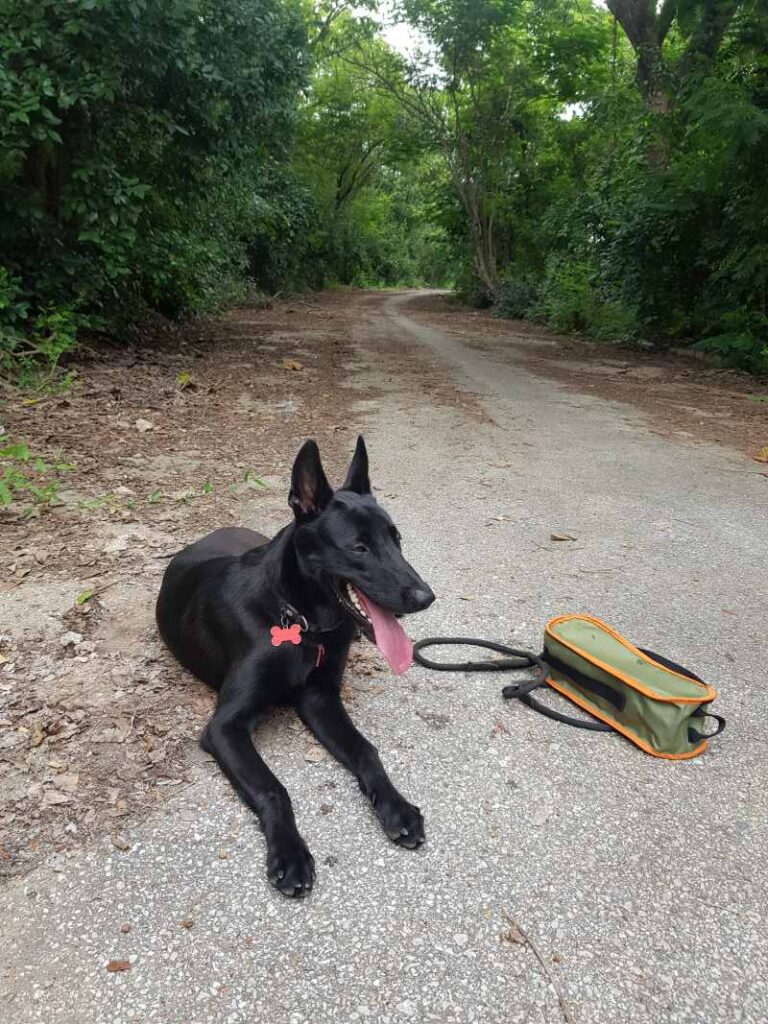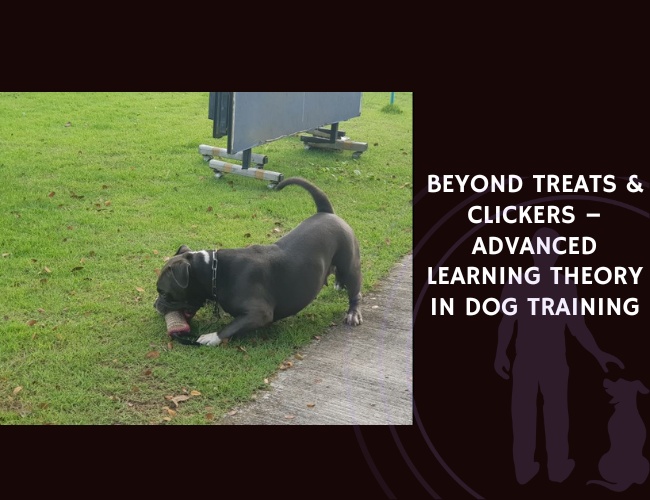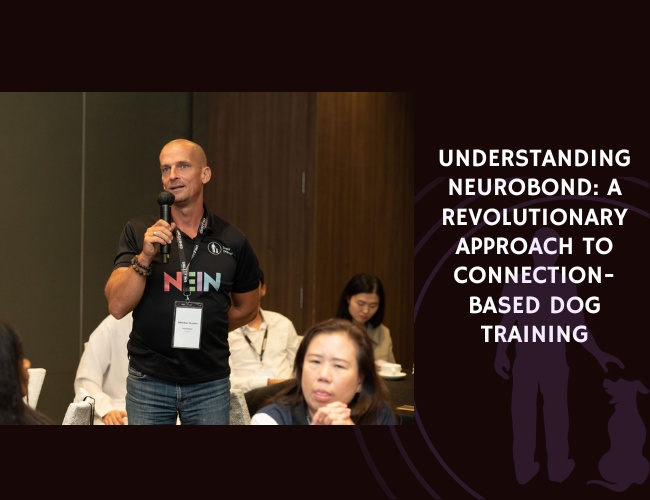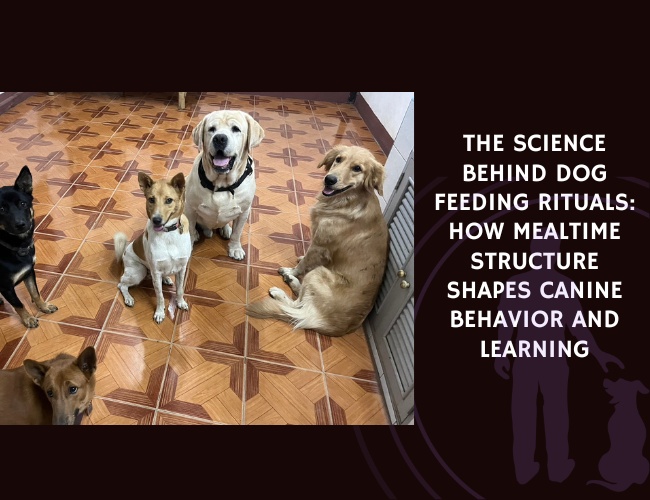Introduction: The Evolution of Dog Training Methodologies
Shifting Beyond the Basics
Over the past few decades, dog training methods have grown from simple reward-based approaches to a dynamic blend of science and compassion. Traditionally, trainers used treats or clickers to encourage certain behaviors—an approach rooted in positive reinforcement. This method is straightforward and user-friendly, making it ideal for teaching basics like “sit” or “stay.” However, as the understanding of canine minds has evolved, it is clear that dogs require more than treats to thrive.
Understanding Traditional Approaches
Treat and clicker training helps reinforce desired actions. When a dog receives a treat for sitting, it learns that sitting brings good results. This feedback loop is effective for basic commands and helps build trust between handler and dog. Still, this approach has limitations. For example, some dogs become dependent on visible rewards, and may not perform reliably without them. Additionally, emotional factors such as stress or fear can block learning, rendering treats less effective in more complex or distracting situations.
Moving Toward a Comprehensive Model
Modern training now considers the dog’s mind and emotions. This comprehensive approach recognizes that learning goes beyond simple reactions. Cognitive frameworks highlight how dogs observe, imitate, and solve problems—skills that basic treat training does not fully address. Emotional well-being is crucial too. Emotional states like anxiety or excitement can shape how a dog responds to training. Neurobiological insights further teach us how brain chemicals, including dopamine and oxytocin, shape learning and the human-animal bond. By weaving these elements together, training becomes more individualized, ethical, and effective for each dog’s unique needs.
This new perspective ensures training methods are professional, supportive, and informative—helping both dogs and their humans succeed together.
The Science Behind Classical and Operant Conditioning
Understanding the Foundations
Dog training relies on proven science—two of the most important building blocks are classical and operant conditioning. These principles paved the way for treat and clicker training, shaping how we teach dogs and understand their behavior.
Classical Conditioning: Pavlov’s Discovery
Classical conditioning, first described by Ivan Pavlov, is about forming associations. In his famous experiments, Pavlov paired a neutral sound (like a bell) with food. Over time, dogs started to salivate at the sound alone, expecting food to follow. In everyday dog training, this means a dog can learn to feel happy when they hear a clicker, because the click is always followed by a treat. This simple association is behind most early training steps—think of teaching a dog to come when called by pairing the recall word with praise or a snack.
Operant Conditioning: Skinner’s Principles
Operant conditioning, developed by B.F. Skinner, goes further. It focuses on how the consequences of a behavior affect whether that behavior happens again. Here are Skinner’s key principles:
- Positive reinforcement: Adding something good, such as a treat, to increase a behavior.
- Negative reinforcement: Taking away something unpleasant, like removing pressure, to encourage a behavior.
- Punishment: Adding or removing something to decrease unwanted behaviors, though modern training discourages aversives because of potential emotional harm.
- Extinction: When a behavior stops because it no longer brings any reward.
Clicker training uses positive reinforcement—click and reward—so the dog repeats good behaviors. Ignoring jumping can be a form of extinction, as jumping is no longer rewarded with attention.
Everyday Examples
- Teaching “sit”: Click and treat when your dog sits (positive reinforcement).
- Reducing leash pulling: Stop walking when the dog pulls, moving only when they are calm (extinction and negative reinforcement).
- Discouraging nipping: Withhold attention when your puppy nips (punishment via removal of attention—called negative punishment).
By building on these scientific principles, trainers lay a strong foundation for learning. However, as training advances, individual dog motivation and emotional well-being must be considered for truly effective, compassionate support. 😊
Limitations of Basic Reinforcement Models
Where Reward-Based Training Falls Short
While treat and clicker training have revolutionized how we teach dogs, these methods have natural limits, especially with complex behaviors. Simple positive reinforcement is effective for basic cues like “sit,” “stay,” or “down.” However, when the tasks become more intricate—such as learning impulse control or responding to subtle cues—relying only on treats may not address deeper needs. Many trainers and guardians find that dogs sometimes perform only when food is present, or fail to generalize learned behavior to new situations. This is a clear sign that essential elements are being overlooked. Some dogs may become so focused on the reward that problem-solving or creativity takes a backseat, reducing flexibility.
The Challenge of Reward Dependency
Dependence on treats or clickers can create barriers to real-life reliability. If a reward is not immediately available, the desired response may not occur. This dependency may also foster frustration or even unwanted behaviors, like demand barking or searching for treats instead of engaging with the task. Treat reliance can inadvertently shape a transactional relationship, rather than one built on trust and mutual understanding. For working dogs or those in high-distraction environments, this can limit training effectiveness.
Emotional Roadblocks to Learning
Training does not happen in a vacuum—emotions play a powerful role in how dogs learn. Anxiety, fear, or stress can interfere with even well-established reinforcement strategies. A dog that is fearful of a particular space or distracted by environmental changes might ignore food rewards entirely. In these cases, trainers must recognize that simple treat delivery cannot overcome heightened emotional states. Understanding each dog’s motivational gradient and preferences is professional and supportive, ensuring learning happens in a way that feels safe and engaging for every individual.
By being aware of these limitations, trainers and guardians can start to move toward more advanced, thoughtful, and holistic approaches for canine learning and behavior.

Cognitive Learning Theories: Understanding How Dogs Think
Social Learning and Observational Modeling
Dogs are not limited to learning through direct reinforcement alone. Research highlights their impressive ability to watch and imitate others, a process known as social learning. This skill allows dogs to pick up new behaviors simply by observing their human or fellow canines. The “Do As I Do” studies demonstrate that dogs can imitate specific actions modeled by a person, showing they can understand and copy even unfamiliar tasks. This cognitive skill supports the idea that dogs think beyond basic habit—they can watch, process, and repeat complex actions when given the chance. This not only enriches training sessions but also strengthens the human-dog bond through interactive learning experiences.
Latent Learning and Mental Representations
Dogs also show latent learning, which means they can form memories and mental maps without needing immediate rewards. For example, a dog may learn the layout of your home by quietly exploring, without direct encouragement. Later, when motivated by a new toy or treat, the dog navigates the space confidently. This ability to store information and draw on it later is a sign of advanced cognition. It shows that dogs can understand and remember the world around them, even when no clear incentive is present.
Problem-Solving Beyond Conditioned Responses
Another impressive aspect of canine intelligence involves problem-solving and insight. Dogs can work through obstacles by using logic and creative approaches, rather than relying only on trial-and-error built through conditioning. For instance, a dog may figure out how to open a gate by manipulating the latch after watching someone demonstrate it just once. This adaptability reflects their power to generalize learning and apply it in new, unexpected situations.
This thoughtful approach to canine cognition shifts training from rote teaching to a deeper, more meaningful learning partnership—empowering dogs to use their minds, not just their instincts, every step of the way.
The Emotional Dimension of Canine Learning
Emotions and Learning Capacity
Emotions play a powerful role in how dogs learn. When a dog feels fear, anxiety, or stress, their ability to absorb and remember new information drops. This is because high stress releases hormones that interrupt how the brain stores memories. For many dogs, negative emotions can make even simple tasks much harder. Creating a supportive and calm environment helps dogs feel safe, boosting learning and making training more enjoyable for both dog and trainer. 😊
Understanding Individual Motivation
Every dog is unique, and what motivates one might not motivate another. Some dogs are highly food-motivated—they’ll do anything for a tasty treat. Others may respond better to toys, play, or positive social attention. Recognizing these differences is crucial for professional and effective training. Building motivational gradients and understanding preference hierarchies can help identify a dog’s true incentives. This allows for training plans that are tailored to a dog’s likes, making learning faster and more rewarding for everyone involved.
Choice, Agency, and Empowerment
Dogs thrive when they feel a sense of choice and autonomy. By giving dogs some control in the training process, trainers can project trust and increase engagement. For example, letting a dog choose between a ball or a tug toy for reward empowers them, keeps them interested, and lowers stress. These small choices add up to a big difference in motivation and well-being.
Empowering dogs to make decisions leads to less resistance, steadier learning, and a happier partnership with their human. Understanding these emotional factors is key to reaching each dog’s full potential and supports a compassionate, science-backed training approach.
With a solid grasp of emotional needs, trainers are well-equipped to explore new insights into how the canine brain works and how learning truly happens.
Neurobiological Insights: The Brain Science of Dog Training
Unlocking the Dog’s Brain Chemistry
Understanding what happens inside a dog’s brain helps us move beyond simple rewards. Key brain chemicals shape learning, bonding, and memory in ways that classic conditioning models do not fully explain.
Dopamine: Fueling Motivation and Learning
Dopamine is a neurotransmitter that plays a critical role in how dogs learn. When a dog achieves success, like sitting on cue or solving a puzzle, dopamine is released. This release creates a pleasant feeling, reinforcing the behavior and encouraging the dog to repeat it. Consistent training, using a variety of positive outcomes, ensures dopamine keeps supporting learning and motivation.
Oxytocin: Creating Trust and Strong Bonds
Oxytocin often called the “bonding hormone,” is vital for building trust between dogs and their humans. Positive social interactions, gentle touch, and eye contact can all boost oxytocin in both the dog and trainer. High oxytocin levels promote better engagement and help dogs feel safe—a condition necessary for successful learning.
Cortisol: The Roadblock of Stress
While some stress is normal, too much cortisol—the main stress hormone—interferes with memory and learning. Dogs facing fear, anxiety, or unpredictable situations experience sharp rises in cortisol, which can block new memories from forming or disrupt training progress. Professional trainers recognize early signs of stress and adjust methods or environment to support the dog’s emotional health.
Mapping the Canine Mind: Research Tools
New tools like fMRI (Functional Magnetic Resonance Imaging) and EEG (Electroencephalogram) are offering supportive, science-backed ways to observe how dogs process rewards, impulses, and emotions. These methods allow professionals to design training that matches individual needs, leading to more informative and compassionate sessions.
By considering the dog’s unique brain chemistry, trainers can create a supportive environment that values both science and compassion. This approach unlocks the dog’s full potential and lays the foundation for successful future learning.
Think. Feel. Learn.
Beyond Basic Rewards
Dog training has evolved far past treats and clickers. While positive reinforcement builds the basics, true learning requires deeper emotional understanding, cognitive stimulation, and individualized support.
Brains in Action
Dogs learn through observation, problem-solving, and emotional connection—not just habit. Modern training taps into their mental world, using science-backed methods rooted in motivation, memory, and trust-building.



Smarter. Kinder. Stronger.
Today’s best trainers honor dogs as thinking, feeling individuals. By replacing rigid routines with emotionally intelligent, ethical approaches, we create stronger bonds and lasting behavior that works in the real world.
Advanced Shaping Techniques for Complex Behaviors
Breaking Down Complex Behaviors
Advanced shaping is a professional dog training method that breaks complex tasks into smaller, easier steps. This process, called “successive approximation,” helps dogs learn challenging behaviors by rewarding each small success along the way. For instance, if teaching a dog to fetch your slippers, the journey begins by rewarding a look at the slippers, then moving closer, picking them up, and finally bringing them to you. By moving step-by-step, we offer supportive guidance that helps prevent frustration and builds the dog’s confidence.
Differential Reinforcement Strategies
Dogs sometimes show unwanted behaviors that can be tricky to change. This is where differential reinforcement strategies step in:
- DRO (Differential Reinforcement of Other Behavior): Reward the dog when it does anything except the problem behavior. For example, if a dog jumps to greet, you reward it for sitting instead.
- DRA (Differential Reinforcement of Alternative Behavior): Reward a specific positive behavior that replaces the unwanted one. If a dog barks at the doorbell, you might teach it to go to a mat quietly when the bell rings.
With consistent, professional support, these strategies help shape behavior without using any punishment, allowing the dog to learn in a positive environment.
Concept Training and Abstract Thinking
Dogs are more than simple learners—they are capable of concept training and abstract thought. Professional trainers now work on tasks that involve understanding concepts like “same versus different,” “object permanence,” and even basic quantity discrimination.
This kind of training goes beyond surface behaviors and taps into the dog’s cognitive and problem-solving skills. Introducing these exercises fosters mental stimulation and well-being, as dogs use their minds to solve tasks, not just follow commands.
These advanced techniques reflect our deep respect for each dog’s abilities and needs. They lay the foundation for the next level of training, where each exercise is matched to the individual dog and their personal journey.
Precision Training for Working and Service Dogs
High-Level Cognitive Task Training
Professional dog training for working and service dogs requires a supportive and informative approach that goes far beyond teaching simple obedience commands. These dogs perform complex tasks, from guiding visually impaired people to detecting medical conditions. Advanced shaping techniques are used to break down intricate behaviors into manageable steps, allowing dogs to build skills gradually and with confidence. Trainers use supportive guidance throughout, ensuring each success is celebrated and every challenge met with compassion.
Tailoring Training to Breed-Specific Cognitive Strengths
Not all dogs learn the same way. Breed-specific traits influence how quickly a dog grasps certain concepts or routines. For example, Border Collies may excel in tasks requiring pattern recognition, while retrievers might shine in scent detection. Acknowledging each dog’s unique cognitive strengths ensures training is both effective and respectful. It’s essential to adapt training methods to align with a dog’s natural abilities, maintaining motivation, reducing frustration, and creating a confident learning environment.
Training Adaptations
- Adjust difficulty based on the breed’s working style
- Use task variations to suit different mental skill sets
- Provide choices that respect a dog’s preference and comfort
Assessing Learning and Stress with Technology
Modern training is enhanced through biofeedback and wearable technology. Tools like heart rate monitors and stress sensors can track a dog’s emotional state and physiological responses during training. This data helps trainers adjust their strategies in real time, supporting both learning and well-being. By monitoring these signals, trainers can identify early signs of discomfort or stress, allowing for immediate and compassionate intervention.
Supporting working and service dogs with these methods ensures every dog’s training journey is tailored, empathetic, and informed using the latest science-backed tools and techniques.

Ethical Considerations in Advanced Dog Training
Embracing Dogs as Thinking, Feeling Individuals
A professional, compassionate approach to dog training now recognizes dogs as sentient and thoughtful beings. The field has moved beyond seeing canines as simple responders to cues or rewards. Trainers and caregivers are encouraged to view each dog as an individual with emotions, motivations, and a distinct personality. This shift helps ensure training is both ethical and supportive, building a stronger, trust-based relationship between people and their dogs.
The Impact of Aversive Methods
Aversive training methods—those relying on fear, pain, or intimidation—can have harmful long-term effects. Such techniques often damage the bond between trainer and dog and may lead to stress, anxiety, or behavioral issues. Scientific understanding tells us that using punishment or force does not foster true learning or well-being. Instead, it can undermine confidence and trust, making future training more challenging and less enjoyable.
Building Trust and Resilience
Modern training now prioritizes cognitive and choice-based methods. These techniques honor dogs’ agency and encourage cooperation rather than compliance. A trust-based relationship is at the heart of these strategies. When dogs are given choices and treated with empathy, they grow more resilient to stress and show greater willingness to learn.
Key practices in ethical dog training include:
- Using positive interactions and reinforcement
- Avoiding punishment and force
- Observing emotional cues and adjusting training pace to fit individual needs
- Celebrating progress with enthusiasm 😊
Research-backed, emotionally intelligent protocols lead to more successful and fulfilling outcomes for both dogs and their human partners. As our understanding of canine cognition and emotion advances, training practices will continue to evolve in a supportive and professional direction.
Implementing Advanced Learning Theory: Practical Applications
Developing Training Plans with Cognitive and Emotional Profiles
Every dog brings a unique mix of personality, emotion, and learning style to the training process. Professional trainers begin by observing each dog’s signals—what motivates them, how they react under stress, and what brings them joy. Some dogs respond best to food, while others are more motivated by toys or social play. Identifying these preferences allows the creation of an individualized plan that takes into account both cognitive strengths and emotional needs. For instance, dogs with higher anxiety levels may benefit from slower steps and greater autonomy, reducing stress and making new skills stick.
Transitioning Beyond Basic Rewards
Moving past treat and clicker basics is key for complex learning. Gradually, trainers can fade out food rewards and introduce other types of reinforcement, like verbal praise, playtime, or environmental enrichment. This helps reduce dependency on treats. Advanced strategies may include:
- Using problem-solving games to encourage independent thinking
- Allowing the dog to make choices, building their sense of agency
- Integrating social learning by having dogs observe others successfully perform tasks
A supportive approach at every stage is essential for keeping the dog engaged and confident.
Real-World Application: Case Studies
Consider Bella, a high-energy Border Collie with a tendency to become distracted. Her trainer shifted from classic reward-based cues to a plan centered on collaborative play, social learning, and choice-based exercises. By shaping complex behaviors using smaller, achievable steps and involving Bella in decision-making, the trainer helped her stay focused and motivated.
Another example is Max, a Labrador Retriever with stress-induced fear of loud noises. Instead of pushing training during high-anxiety periods, his trainer prioritized calm, stress-free sessions, used soft praise, and introduced gradual exposure through positive associations.
These individualized, emotionally intelligent protocols result in confident, resilient learners and stronger human-dog partnerships, demonstrating the powerful impact of advanced learning theory in action.
The Future of Dog Training: Emerging Research and Innovations
Breakthroughs in Understanding Canine Minds
The future of dog training is shaped by exciting research in canine cognition. Scientists are delving into how dogs process information, form memories, and learn from their surroundings. New studies show that dogs can imitate actions, solve puzzles without trial and error, and even grasp abstract concepts like sameness and difference. These breakthroughs confirm that dogs think, feel, and understand the world in highly sophisticated ways.
Technological Advancements Transforming Training
Technology is quickly reshaping how professionals approach dog training. Functional MRI (fMRI) and EEG are now used to study how a dog’s brain responds during training. These tools help professionals understand how trust, reward, and stress shape learning. Wearable technology—such as biofeedback collars and smart harnesses—monitors a dog’s stress and engagement in real-time, making it easier to adjust training in a supportive, individualized way. This ensures each dog receives training that matches their unique emotional and cognitive needs.
Evolving Human-Canine Relationships
Our growing understanding of dog cognition continues to change the way we connect with dogs. Trainers and guardians now focus on building trust, offering choice, and respecting each dog’s personality. Recognizing dogs as sentient beings leads to more compassionate, ethical methods. Training shifts away from controlling behavior with treats alone, and moves toward deep partnerships built on communication and respect.
Embracing these advanced insights and innovations helps us create meaningful, effective, and humane training experiences. This modern approach not only supports a dog’s learning but also strengthens the special bond we share with our canine companions. 😊
Conclusion: Towards More Effective and Compassionate Training
Key Insights from Advanced Learning Theories
The journey beyond basic treat and clicker training shows us that dogs deserve an approach rooted in science, compassion, and individuality. We have learned that while positive reinforcement is a strong foundation, it does not always address complex behaviors or emotional needs. By exploring cognitive learning, emotional health, and the neurobiology of canine learning, trainers can develop techniques that are more supportive and professional.
Advanced learning theories highlight how dogs learn not only through repetition but also by observing, remembering, and problem-solving. Understanding social and latent learning in dogs urges us to respect their intelligence and adaptability. Recognizing the roles of dopamine and oxytocin in motivation and trust further deepens our bond and training impact. Moreover, research shows that fear, stress, and cortisol can hinder progress, so a calm, choice-rich environment is essential for memory and learning.
The Value of Ethical, Science-Backed Alternatives
Today’s professional, supportive trainers move beyond outdated, punitive methods. Ethical alternatives prioritize each dog’s emotional and cognitive well-being, using individualized plans that focus on motivation, agency, and autonomy. Advanced shaping and reinforcement strategies help transform unwanted behaviors and nurture confident learners.
Embracing these strategies ensures that training is not only more effective but also more humane. When trainers address both the mind and emotions of each dog, results are lasting and the human-dog relationship thrives.
A Call for Emotionally Intelligent, Individualized Training
We encourage trainers, professionals, and guardians to adopt emotionally intelligent, individualized training protocols. Let’s honor the unique nature of every dog. Through compassionate guidance and science-backed methods, we can foster trust, enjoyment, and genuine connection every step of the way.
By valuing modern research and empathetic practices, you provide the best support for every dog and set a new standard for humane, professional training. Thank you for joining us on this journey towards a brighter future for all dogs and their families. 😊









